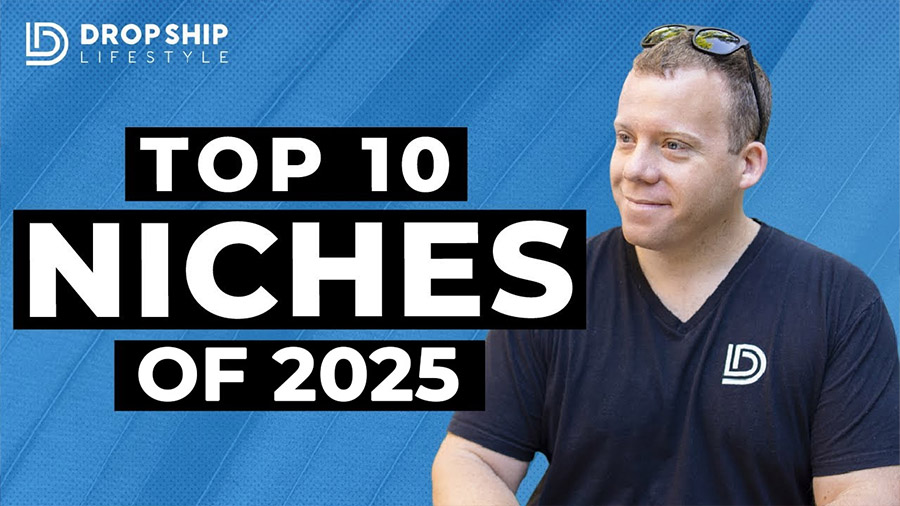What Is Dropshipping
Dropshipping 2025 is a retail model where you list and sell products online, but your supplier handles the inventory and shipping. You earn a profit on the markup without touching the product.
In Dropshipping 2025 has evolved:
- AI tools handle customer service and automation.
- Global suppliers offer faster shipping.
- Niche branding beats general stores.
The big advantage? You can launch with minimal capital, test hundreds of products, and scale fast.
Dropshipping 2025 is Profitable?
Yes, but only with the right strategy. The key difference now is quality over quantity. Customers expect:
- Fast shipping
- Branded experiences
- Responsive support
Here’s why it’s still profitable:
- No upfront product costs
- 100% location-independent
- Scalability through automation
- Real-time product testing before bulk investing
How to Start Dropshipping 2025
1. Choose a Profitable, Future-Ready Niche
Avoid general gadgets. Choose a targeted niche with high demand, low competition, and passionate buyers.
Hot Niches for 2025:
- Smart home & eco-tech
- Pet wellness and accessories
- Remote work productivity tools
- Baby safety & parenting kits
- Sustainable beauty & wellness
Use Google Trends, Exploding Topics, or Subreddit forums to validate your niche idea with real-time interest.
2. Validate Your Market and Research Competitors
No idea is complete without researching:
- What your competitors are selling
- How they position their brand
- What their customers complain about
Use tools like Ahrefs, Ubersuggest, or even Facebook Ad Library to reverse-engineer their SEO, ads, and products.
3. Find Trusted Suppliers with Fast Fulfillment
Your customer experience depends on who ships the product.
Recommended Suppliers for Dropshipping 2025:
- Spocket (Fast US/EU shipping)
- Zendrop (Private labeling)
- CJ Dropshipping (Custom packaging)
- Printful (For print-on-demand products)
Avoid cheap AliExpress sellers with slow delivery and poor reviews this is 2019 strategy, not 2025.
4. Build a Conversion-Optimized Store
Choose your platform wisely:
Best Platforms in 2025:
- Shopify: Fast setup, lots of app integrations
- WooCommerce is Ideal for WordPress users, with more SEO control
- BigCommerce is Better for scaling large inventories
Design Tips:
- Use lightweight themes for speed
- Create branded logos via Looka or Canva
- Add social proof (Trustpilot, Judge.me)
- Optimize mobile UX, more than 75% of buyers shop via mobile
5. Install Tools for Automation, SEO & Trust
Here’s your must-have tech stack:
| Tool | Purpose |
|---|---|
| DSers / AutoDS | Automate order management & product import |
| Rank Math SEO | Boost SEO and metadata |
| Tidio / Zendesk | Chat + customer support automation |
| Klaviyo | Email & abandoned cart flows |
| Lucky Orange | Heatmaps and session recordings |
6. Add Winning Products with Data-Backed Decisions
Use Sell The Trend, Pexda, or AliShark to uncover hot-selling products based on:
- Rising order volumes
- Profit margins
- Product reviews & ratings
- Low refund rate
Avoid novelty fads unless you’re ready to pivot fast.
7. Set Fair Pricing and Add Multiple Payment Options
Use a simple markup formula:
Product Cost × 2.5 = Retail Price
Enable trusted payment gateways:
- PayPal
- Stripe
- Razorpay (India)
- Apple Pay / Google Pay
Be transparent with shipping fees and return policies. It boosts conversions and Google rankings.
8. Optimize Your Store for Google SEO
Search engines still bring free traffic—if you rank.
Optimize for:
- Mobile speed (use GTmetrix to test)
- Product keywords (e.g. “eco-friendly yoga mat for beginners”)
- Long-tail blog content (e.g., “How to build a home gym in 2025”)
- Alt text for images
- Schema markup for products (Rank Math helps with this)
9. Drive Traffic: Paid & Organic Marketing in 2025
Paid Ads:
- Facebook/Instagram: Great for D2C product discovery
- TikTok Short-form videos convert exceptionally well
- Google Shopping Ads: High buyer intent
Organic Growth:
- Start a blog targeting problem-solving keywords
- Create Pinterest pins for product visuals
- Use YouTube shorts or unboxing videos
- Collaborate with micro-influencers on TikTok
Tip: Focus on ONE primary traffic source when you begin. Master it before adding more.
10. Analyze & Optimize for Growth
Track what’s working. Adjust what’s not.
Tools to Use:
- Google Analytics (behavior, conversions)
- Facebook Pixel (ad ROI)
- Shopify Analytics (product sales breakdown)
- Hotjar / Microsoft Clarity (heatmaps & visitor recordings)
Test headlines, images, and pricing with A/B tools to boost conversion rates.
5 Dropshipping Mistakes to Avoid in 2025
- Using slow or unverified suppliers
- Relying only on Facebook ads
- Selling generic, unbranded products
- Ignoring SEO and organic growth
- Not collecting emails for remarketing
Future-Proof Your Dropshipping Store
Stay ahead with these 2025 eCommerce trends:
- AI chatbots (ChatGPT plugins, Tidio AI)
- Product personalization (custom gifts)
- Voice commerce optimization
- Ethical & sustainable sourcing
- Headless eCommerce for lightning-fast stores
Final Thoughts: Dropshipping 2025 Is About Brand, Not Hype
The era of “get rich quick” dropshipping is over.
In 2025, you win by building trust, offering value, and running a lean operation powered by automation and insight.


